Bearded dragons make great pets, but they require proper care and attention due to their specific needs and potential drawbacks. These lizards have a calm temperament and can live up to 10 years or longer.
However, they require a well-maintained habitat, regular vet check-ups, and a balanced diet consisting of live insects and vegetables. Another consideration is the cost of setting up their enclosure, lighting, heating, and ongoing expenses for food and medical care. Additionally, bearded dragons can carry salmonella bacteria, which can be transmitted to humans if proper hygiene is not followed.
Overall, owning a bearded dragon can be a rewarding experience, but it requires commitment and responsibility.

Credit: www.amazon.com
Factors To Consider Before Getting A Bearded Dragon
Before getting a bearded dragon as a pet, it’s important to consider factors such as their care requirements, lifespan, and potential health issues. Understanding the pros and cons of owning a bearded dragon can help make an informed decision.
Bearded-dragons are fascinating creatures that have become increasingly popular as pets. However, before deciding to bring a bearded dragon into your home, it’s important to consider a few key factors. This section will outline the size and space requirements, time and commitment involved, as well as the budget for equipment and supplies needed to properly care for a bearded dragon.
Size And Space Requirements:
- Bearded dragons can grow up to 24 inches in length, so they require a spacious enclosure to live comfortably.
- A minimum tank size of 40 gallons is recommended for adult bearded dragons to allow for adequate space to move around and bask under the heat lamp.
- The tank should also have enough height to accommodate branches and climbing structures, as bearded dragons are semi-arboreal creatures.
- Creating a suitable habitat for your bearded dragon involves providing hiding spots, a basking area with a heat lamp, and a uvb light source for their well-being.
Time And Commitment:
- Bearded dragons are social animals and require daily interaction and mental stimulation from their owners.
- Feeding bearded dragons requires time and effort. They should be fed a variety of insects, fruits, vegetables, and sometimes even small amounts of supplementation.
- Regular cleaning of the enclosure is necessary to maintain a hygienic environment for the bearded dragon.
- These reptiles have a lifespan of 10-15 years, so owning a bearded dragon is a long-term commitment that requires consistent care and attention.
Budget For Equipment And Supplies:
- Owning a bearded dragon requires an initial investment in equipment and supplies. This includes purchasing an appropriate-sized tank, heating elements, lighting fixtures, and substrate for the enclosure.
- Bearded dragons need a uvb light source to synthesize vitamin d3, which is essential for their overall health.
- Food costs can add up, as bearded dragons require a varied and nutritious diet consisting of live insects, fresh fruits, and vegetables.
- Regular veterinary check-ups, as well as potential medical expenses, should also be factored into your budget.
Considering these factors will help you make an informed decision about whether a bearded dragon is the right pet for you. With the proper size enclosure, dedicated time and commitment, and a budget for essential equipment and supplies, you can provide a happy and healthy home for your bearded dragon.
Pros Of Owning A Bearded Dragon
Owning a bearded dragon has several advantages as a pet. These include their docile nature, low maintenance care, and ability to thrive in a variety of living conditions. With their unique appearance and gentle demeanor, bearded dragons make wonderful companions for reptile enthusiasts.
Bearded Dragons As Pets: Pros Of Owning A Bearded Dragon
Bearded dragons have become increasingly popular as pets due to their unique appearance, low maintenance needs, and the bonding opportunities they offer. If you’re considering getting a bearded dragon as a pet, here are some pros to keep in mind:
Low Maintenance Pet
Taking care of a bearded dragon doesn’t have to be a daunting task. Here are the reasons why they are considered low maintenance pets:
- Simple housing requirements: Bearded dragons require a spacious enclosure with the right temperature and lighting set up. Once you have the proper setup, maintaining their habitat becomes relatively easy.
- Easy feeding: These reptiles have omnivorous diets, enjoying a mix of greens, vegetables, fruits, and protein sources like insects. They don’t have complicated dietary needs, making feeding a straightforward process.
- Minimal grooming: Unlike some other pets, bearded dragons don’t require frequent baths or grooming sessions. They are generally clean animals that keep themselves tidy.
Unique And Attractive Appearance
One of the most striking aspects of bearded dragons is their unique and attractive appearance. Here’s why their appearance might captivate you:
- Distinctive bearded look: Bearded dragons get their name from the spiny, bearded-like scales around their throat. When they feel threatened or territorial, they puff out these scales, creating an impressive display.
- Vibrant colors and patterns: These reptiles come in a variety of colors and patterns, ranging from earth tones to bold and vivid hues. Their aesthetic appeal makes them visually pleasing pets to have.
- Fascinating movements: Observing a bearded dragon’s movements can be captivating. From their relaxed basking poses to their energetic hunting maneuvers, they possess a grace that is both intriguing and entertaining.
Bonding And Interaction Opportunities
Bearded dragons are known for their sociable nature and the bonding opportunities they provide. Here’s why they make great companions:
- Docile temperament: Bearded dragons are generally friendly and easygoing creatures. With proper handling and care, they can become accustomed to human interaction and develop a bond with their owners.
- Interactive pets: These reptiles can recognize their owners and enjoy spending time interacting with them. They often respond positively to gentle petting, will climb onto your hand or shoulder, and may even enjoy being hand-fed.
- Educational experience: Owning a bearded dragon can provide educational opportunities for both adults and children. Observing their behaviors, learning about their habitat requirements, and understanding their unique biology can be a fascinating and enriching experience.
Owning a bearded dragon as a pet offers numerous advantages. They are low maintenance, have a visually appealing appearance, and provide opportunities for bonding and interaction. With their unique charm and interesting behaviors, bearded dragons can make delightful companions for reptile enthusiasts and individuals looking for a captivating pet experience.
Cons Of Owning A Bearded Dragon
Owning a bearded dragon as a pet has some drawbacks, including the need for specialized care, frequent cleaning of their enclosure, and the potential for aggression in males. However, with proper research and attention, these issues can be mitigated, making them enjoyable and rewarding pets.
Bearded Dragons As Pets Pros And Cons
Bearded-dragons are fascinating reptiles that have become increasingly popular as pets. They have unique personalities, beautiful colors, and can make wonderful companions. However, like any pet, there are both pros and cons to consider before bringing a bearded dragon into your home.
We will explore the cons of owning a bearded dragon under the subheadings: specialized care and handling needs, cost of initial setup and ongoing expenses, and lifespan and long-term commitment.
Specialized Care And Handling Needs
Caring for a bearded dragon requires specific knowledge and attention to detail. Here are some considerations regarding their care and handling needs:
- Temperature and lighting requirements: Bearded dragons are ectothermic, meaning they rely on external sources of heat-to regulate their body temperature. You’ll need to provide a temperature gradient within their enclosure, along with specialized lighting, such as uvb bulbs, to ensure their health and well-being.
- Dietary requirements: Bearded dragons have specific dietary needs that must be met to maintain their health. They require a varied diet consisting of live insects, vegetables, and occasionally fruits. Preparing their meals can be time-consuming and may require frequent trips to the pet store to purchase insects.
- Enclosure size and maintenance: Bearded dragons require spacious and adequately equipped enclosures to thrive. Proper ventilation, appropriate substrate, and access to hiding spots and climbing structures are essential. Regular cleaning and maintenance of the enclosure are also necessary to prevent the buildup of bacteria and other potential health risks.
Cost Of Initial Setup And Ongoing Expenses
Owning a bearded dragon involves some financial investment. Consider the following costs associated with their ownership:
- Enclosure and equipment: The initial setup cost for a bearded dragon can be significant. You’ll need to purchase a suitable enclosure, heat sources, lighting fixtures, substrate, and other essential equipment. These expenses can quickly add up.
- Veterinary care: Routine check-ups with a reptile veterinarian are essential to ensure the health of your bearded dragon. Veterinary expenses, including potential treatments for illnesses or injuries, should be taken into account.
- Food and supplements: Providing a balanced diet for your bearded dragon requires purchasing live insects, fruits, vegetables, and supplements. The cost of these items can be ongoing and vary depending on availability and seasonal fluctuations.
Lifespan And Long-Term Commitment
While bearded dragons can live up to 10-15 years with proper care, their long lifespan requires a significant commitment. Here are some factors to consider:
- Time and attention: Bearded dragons require daily care and interaction. Feeding, cleaning, and providing mental stimulation and socialization are vital for their well-being. You must be prepared to dedicate time to your pet on a regular basis.
- Long-term responsibility: Owning a bearded dragon is a long-term commitment. As they can live for over a decade, you need to consider potential life changes such as moving, career changes, or starting a family. Ensuring they have a stable and suitable environment throughout their lifespan is crucial.
Owning a bearded dragon comes with specialized care and handling needs, a cost associated with initial setup and ongoing expenses, as well as a long-term commitment. While they can make wonderful pets for dedicated reptile enthusiasts, it is important to carefully consider these cons before deciding if a bearded dragon is the right pet for you.
Choosing The Right Enclosure
Choosing the right enclosure is crucial for keeping bearded dragons as pets. Consider the pros and cons to create a suitable habitat that meets their needs while providing a safe and comfortable environment.
Bearded Dragons As Pets Pros And Cons
Bearded dragons are fascinating reptiles that make unique and rewarding pets. Before bringing one into your home, it’s important to understand the various aspects of their care. One of the crucial decisions you’ll face as a potential bearded dragon owner is choosing the right enclosure.
Providing an appropriate habitat is essential for your dragon’s health and well-being.
Enclosure Size And Type
- A bearded dragon’s enclosure should be spacious enough to allow for movement and exercise. A larger habitat will provide a more comfortable and stimulating environment for your pet.
- The minimum recommended size for a single adult bearded dragon is a 40-gallon terrarium. However, it’s always better to provide a larger enclosure if possible.
- Consider a custom-built enclosure with dimensions of at least 48 inches in length, 24 inches in width, and 24 inches in height.
- Opt for an enclosure made of glass or pvc, as they are easy to clean and maintain. Avoid wire mesh cages, as they may not provide adequate heat and can potentially cause injury to your dragon.
Proper Substrate For The Habitat
- Selecting the right substrate is crucial to creating a suitable and hygienic environment for your bearded dragon.
- Avoid loose substrates like sand, walnut shells, or wood chips, as they can lead to ingestion and cause impaction.
- Opt for safer alternatives such as reptile carpet, paper towels, or non-adhesive shelf liners. These provide a secure footing for your dragon and are easy to clean.
- Additionally, providing hides and foliage within the enclosure can serve as enrichment and create a more naturalistic environment for your bearded dragon to explore.
Temperature And Lighting Requirements
- Maintaining the proper temperature gradient is essential for your bearded dragon’s health and digestion.
- Provide a basking spot with a temperature of around 95°f to 100°f (35°c to 38°c) using a heat lamp or ceramic heat emitter.
- The cooler end of the enclosure should range between 75°f and 85°f (24°c to 29°c), allowing your dragon to regulate its body temperature.
- Uvb lighting is crucial for bearded dragons as it allows them to process calcium and aids in preventing metabolic bone disease.
- Ensure the enclosure has a dedicated uvb light fixture that spans two-thirds of the enclosure’s length and is replaced every 6 to 12 months.
By considering these factors when choosing the right enclosure, you can create a safe and comfortable home for your bearded dragon. Remember, providing an appropriate habitat is just one aspect of responsible reptile ownership. Be sure to research and understand all the necessary elements of care before bringing home your scaly companion.
Essential Equipment And Supplies
Equip your bearded dragon with essential equipment and supplies for optimal care. From terrariums to heat lamps, ensure your pet’s needs are met. Explore the pros and cons of keeping bearded dragons as pets to make an informed decision.
Bearded Dragons As Pets Pros And Cons
Bearded dragons are popular reptiles that make interesting and rewarding pets. Before you decide to bring one home, it’s essential to understand the necessary equipment and supplies required to provide a suitable habitat for your new scaly friend. Proper heat and lighting, as well as thermometers and hygrometers to monitor the environment, and food and water dishes for feeding, are all crucial aspects of creating a comfortable living space for your bearded dragon.
Heat And Uvb Lighting:
- Heat: Bearded dragons are ectothermic creatures, meaning they rely on external heat sources to regulate their body temperature. Providing a proper heat gradient within their enclosure is vital for their overall-health and wellbeing. Here’s what you need to consider:
- Basking spot: Your bearded dragon will require a basking spot where they can raise their body temperature. Use a heat lamp or ceramic heat emitter to provide a focused source of heat. The temperature at the basking spot should be maintained between 95°f and 105°f (35°c and 40°c).
- Ambient temperature: The rest of the enclosure should have a slightly lower temperature than the basking spot, allowing your pet to cool down when needed. The ideal ambient temperature range is around 85°f to 90°f (29°c to 32°c).
- Heat source placement: Ensure that the heat source is securely mounted and positioned to prevent any accidental burns or fires. It should be placed at one end of the enclosure, creating a temperature gradient throughout the habitat.
- Uvb lighting: Bearded dragons need access to uvb lighting for the synthesis of vitamin d3, which aids in the absorption of calcium. Here’s what you should know about uvb lighting:
- Uvb bulbs: Invest in a high-quality uvb bulb that emits the appropriate uvb wavelength (around 290-310 nanometers). This ensures your bearded dragon receives the necessary uvb rays for proper calcium metabolism. Replacing the bulb every six to twelve months is essential, as uvb output decreases over time.
- Photoperiod: Bearded dragons thrive with a consistent day-night cycle. Aim for 12 to 14 hours of light during the day, followed by 10 to 12 hours of darkness at night. Using a timer for the lighting setup can help maintain this cycle effectively.
Thermometers And Hygrometers:
- Temperature monitoring: Accurate temperature monitoring is crucial to maintain a bearded dragon’s wellbeing. Consider using the following equipment:
- Digital thermometer: Use a digital thermometer with a probe to measure the temperature at the basking spot accurately. This will help you ensure the area remains within the optimal range for your pet’s comfort.
- Ambient thermometer: Place an ambient thermometer at the cooler end of the enclosure to monitor the overall temperature. This will allow you to confirm that the gradient is appropriate and provide a comfortable range for your bearded dragon.
- Humidity monitoring: Although not as sensitive to humidity as some other reptiles, monitoring humidity levels is still important. Here’s how you can do it:
- Hygrometer: Install a hygrometer to measure the humidity within the enclosure. Bearded dragons generally require a humidity level between 30% and 40%. Ensure that the hygrometer is placed away from direct misting or water sources to obtain an accurate reading.
Food And Water Dishes:
- Food bowls: Bearded dragons require food bowls to hold their meals. Consider the following aspects when choosing and using food bowls:
- Size: Select appropriately sized bowls that are easy for your bearded dragon to access. Avoid deep bowls to prevent any difficulty in reaching the food.
- Cleaning: Regularly clean the food bowls to maintain proper hygiene. Leftover food or moisture can lead to bacterial growth, which may pose health risks for your pet.
- Water dish: While bearded dragons primarily obtain hydration from their food, it’s still important to provide a shallow water dish in their enclosure. Remember these points:
- Size and depth: Choose a shallow water dish that allows your bearded dragon to easily access and exit without the risk of drowning. The dish should be large enough for them to soak in if they wish.
- Clean water: Ensure the water dish is cleaned and refilled daily to provide fresh, clean water for your pet.
By setting up the necessary equipment and supplies for your bearded dragon, you are creating an environment that closely mimics their natural habitat. This will contribute to their overall health and happiness as a pet. Proper heat and uvb lighting, along with temperature and humidity monitoring, as well as appropriate food and water dishes, are all essential components for providing your bearded dragon with a comfortable and thriving home.
Creating An Enriching Environment
Discover the advantages and disadvantages of owning a bearded dragon as a pet. Create a nurturing environment for these fascinating reptiles, considering factors such as their care needs, behavior, and potential benefits and challenges of keeping them as pets.
Decoration And Hiding Spots
- Bearded dragons thrive in an environment that stimulates their natural habitat. By decorating their enclosure, you can create a visually appealing and enriching space for your pet.
- Provide various types of branches, rocks, and logs for climbing and exploring. These natural elements aid in their physical exercise and mental stimulation.
- Place artificial foliage and plants within the enclosure to mimic their natural surroundings. This not only adds visual interest but also provides hiding spots for your bearded dragon.
- Use a variety of textures and colors to create a multi-dimensional environment. Different textures can enrich their sensory experience, while various colors stimulate their curious nature.
- Avoid using any decorations that may be harmful to your pet, such as sharp or toxic materials. Safety should always be a priority when designing their living space.
Providing Exercising Opportunities
- Regular exercise is essential for the health and well-being of bearded dragons. Allowing them opportunities to roam and explore beyond their enclosure is crucial.
- Set up a safe and supervised area outside their habitat where they can stretch their legs and bask in natural sunlight. However, always ensure the area is secure to prevent escape or potential harm.
- Constructing an indoor obstacle course or introducing interactive toys can also provide mental stimulation and physical exercise.
- Encourage your bearded dragon to climb and explore different surfaces by placing logs or branches at various heights within their enclosure.
- Engage in interactive playtime sessions with your pet, using toys that encourage natural behaviors, such as chasing or hunting movements.
Maintaining Proper Hygiene And Cleanliness
- Bearded dragons require a clean and hygienic living environment to thrive. Regular maintenance and cleanliness are crucial for their overall health.
- Provide a comfortable and spacious enclosure, allowing ample room for exercise and natural behaviors while ensuring easy access for regular cleaning and maintenance tasks.
- Clean the enclosure regularly to remove feces, uneaten food, shed skin, and any other waste material. This helps prevent the growth of harmful bacteria and the occurrence of infections.
- Use non-toxic cleaning products specifically formulated for reptile enclosures. Avoid using any chemicals that may be harmful or produce strong fumes that could be detrimental to your pet’s respiratory system.
- Regularly inspect the enclosure for any signs of wear and tear, damaged or hidden areas that could pose a risk to your bearded dragon’s safety. Ensure that all equipment, such as heating elements and lighting fixtures, are functioning properly and do not pose a hazard.
Remember, creating an enriching environment for your beloved bearded dragon is not only crucial for their physical and mental well-being but also adds to the joy and satisfaction of being a reptile pet owner. By offering decoration and hiding spots, providing exercising opportunities, and maintaining proper hygiene and cleanliness, you can ensure a happy and healthy life for your scaly companion.
Diet And Food Options
Considering diet and food options for bearded dragons as pets, it is important to weigh the pros and cons. While they can enjoy a varied and healthy diet of insects and vegetables, it is crucial to ensure a proper balance to meet their nutritional requirements.
Careful consideration will help you provide the best care for your beloved reptile companion.
Bearded dragons make fascinating and unique pets, but before you decide to bring one into your home, it’s essential to understand their dietary needs. Providing an appropriate diet is crucial for their overall health and well-being. In this section, we will explore the diet and food options for bearded dragons, including the feeding schedule, portion sizes, fresh greens and vegetables, and insects and protein sources.
Feeding Schedule And Portion Sizes:
Setting a proper feeding schedule and portion sizes is vital to ensure that your bearded dragon receives the necessary nutrients without overfeeding or underfeeding. Here are some key points to keep in mind:
- Bearded dragons up to six months old should be fed twice daily, while those older than six months can be fed once a day.
- Ensure that your bearded dragon has access to fresh water at all times.
- Portion sizes should be based on the size of your dragon’s head. Generally, the food should be no larger than the space between their eyes.
- Remove any uneaten food after 15-20 minutes to prevent spoilage and bacterial growth.
Fresh Greens And Vegetables:
Including fresh greens and vegetables in your bearded dragon’s diet is crucial to provide important vitamins and minerals. Here are some recommended options:
- Dark, leafy greens like kale, collard greens, and dandelion greens are excellent choices. These are high in calcium and other essential nutrients.
- Other suitable vegetables include bell peppers, squash, sweet potatoes, and green beans.
- Aim for a variety of colors to ensure a diverse range of nutrients.
Insects And Protein Sources:
Bearded dragons are omnivores and require a source of protein in their diet. Insects and other protein sources should be included regularly. Here are some options to consider:
- Crickets, mealworms, and dubia roaches are commonly fed to bearded dragons. These provide a good balance of protein and calcium.
- Other suitable insects include silk worms, super worms, and black soldier fly larvae.
- Avoid feeding wild-caught insects to reduce the risk of pesticide or parasite exposure.
Remember to provide a varied and balanced diet by offering different insects, greens, and vegetables to meet your bearded dragon’s nutritional requirements. Consulting with a veterinarian who specializes in reptiles can help ensure that you are meeting your pet’s specific dietary needs.
With proper nutrition, your bearded dragon can thrive and live a happy and healthy life as your fascinating companion.
Vitamins And Supplements
Vitamins and supplements provide both benefits and drawbacks for bearded dragons kept as pets. While they can enhance their overall health and support specific needs, improper usage or excessive dosages may harm their well-being. Careful consideration and consultation with a reptile veterinarian are essential for providing appropriate supplementation.
Bearded Dragons As Pets Pros And Cons
Bearded dragons make fascinating and engaging pets, but like any pet, they come with their own set of pros and cons. One essential aspect of caring for these unique reptiles is ensuring they receive the necessary vitamins and supplements to maintain optimal health.
In this section, we will explore the importance of calcium and vitamin d3, the practice of dusting and gut loading feeder insects, and potential health issues that may arise from nutritional deficiencies.
Importance Of Calcium And Vitamin D3
- Calcium and vitamin d3 are vital for the overall health and well-being of bearded dragons.
- The combination of calcium and vitamin d3 is crucial for proper bone growth, development, and preventing metabolic bone disease.
- Bearded dragons require a calcium-to-phosphorus ratio of 2: 1 in their diet to ensure calcium absorption.
- Vitamin d3 aids in the absorption of calcium, helping the bearded dragon maintain healthy bones and prevent issues such as soft bones or bone deformities.
- Natural sunlight or uvb lighting is an excellent source of vitamin d3, but it is essential to provide supplements when the natural source is insufficient.
Dusting And Gut Loading Feeder Insects
- Dusting feeder insects with calcium powder is a common practice to boost the calcium intake for bearded dragons.
- Feeder insects such as crickets, dubia roaches, and mealworms can be coated with a calcium powder before feeding them to your dragon.
- This ensures that the insects provide a high level of calcium, which is then passed on to the bearded dragon when consumed.
- Gut loading is another crucial step in ensuring the feeder insects are nutritionally rich for your dragon.
- Feeder insects should be fed with nutrient-rich foods such as dark leafy greens, fruits, and vegetables to enhance their nutritional content.
Potential Health Issues From Nutritional Deficiencies
- Without an adequate supply of calcium and vitamin d3, bearded dragons can develop various health issues.
- Metabolic bone disease is one of the most common conditions resulting from calcium and vitamin d3 deficiencies.
- This disease can cause weak and deformed bones, leading to difficulties in movement, fractures, and even death in severe cases.
- It is essential to monitor the bearded dragon’s diet to ensure they are receiving the right amount of calcium and vitamin d3.
- Regular visits to a reptile veterinarian may be necessary to detect and address any nutritional deficiencies or related health issues promptly.
Providing proper vitamins and supplements is crucial to the overall well-being of bearded dragons. The importance of calcium and vitamin d3 cannot be stressed enough, as they play a vital role in their bone health. Through dusting and gut loading feeder insects, you can ensure that your dragon receives the necessary nutrients.
By maintaining a balanced diet and monitoring for any potential health issues, you can keep your bearded dragon happy and healthy for years to come.
Handling Feeding Challenges
Feeding challenges with bearded dragons as pets can be managed through proper care and attention. Understanding the pros and cons of keeping these reptiles will help ensure a healthy and balanced diet for your pet.
Bearded dragons can make fascinating and engaging pets, but like any other pet, they come with their own set of challenges. One area that can be particularly challenging for owners is handling feeding. From picky eaters to finding suitable feeder insect options, it’s important to understand the pros and cons to ensure you are providing your bearded dragon with a healthy and balanced diet.
In this section, we will explore two key aspects of handling feeding challenges: picky eaters and food preferences, as well as feeder insect options and alternatives. We will also discuss how to recognize signs of overfeeding or malnutrition to ensure your bearded dragon is thriving.
Let’s dive in!
Picky Eaters And Food Preferences:
- Bearded dragons can sometimes be picky eaters, which can be frustrating for owners. Here are some considerations to keep in mind:
- Variety is key: Offering a wide range of food options can help to stimulate your bearded dragon’s appetite. Experiment with different vegetables, fruits, and feeder insects to find what they enjoy.
- Introduce new foods gradually: Bearded dragons can be wary of new foods, so it’s important to introduce them slowly. Start by offering small amounts and gradually increase the quantity over time.
- Texture matters: Bearded dragons may have preferences for certain textures. Some may prefer crunchy vegetables, while others may prefer softer options. Observing their eating habits can help you determine their preferences.
Feeder Insect Options And Alternatives:
- Feeder insects are a crucial part of a bearded dragon’s diet, providing essential nutrients and protein. Here are some options and alternatives to consider:
- Crickets: Crickets are a common and readily available feeder insect. They are rich in protein and are usually well-received by bearded dragons.
- Dubia roaches: These roaches are also a popular choice as they have a soft exoskeleton, making them easier for bearded dragons to digest.
- Mealworms: While mealworms are a common option, they should be fed sparingly due to their high fat content. Moderation is key.
- Phoenix worms (black soldier fly larvae): These small worms are low in fat, making them a healthier option. They are also rich in calcium.
- Vegetables as alternatives: In addition to feeder insects, bearded dragons can also consume a variety of vegetables, including leafy greens, squash, and bell peppers. These can be used as alternatives or supplements to feeder insects.
Recognizing Signs Of Overfeeding Or Malnutrition:
- Overfeeding and malnutrition can have serious consequences on the health of your bearded dragon. Here are some signs to be aware of:
- Obesity: If your bearded dragon is becoming overweight or their limbs are losing definition, it may be a sign of overfeeding.
- Stunted growth: Not providing adequate nutrition can result in stunted growth or developmental issues.
- Changes in appetite: Sudden loss of appetite or refusal to eat can indicate health issues or a lack of interest in their current diet.
- Brittle bones: Bearded dragons require calcium for strong bones. A lack of calcium can lead to metabolic bone disease, causing weakened bones and deformities.
Remember, handling feeding challenges requires patience and a willingness to adapt. By understanding your bearded dragon’s preferences, offering a varied diet, and monitoring their health, you can ensure they enjoy a balanced and nutritious diet that supports their overall well-being.
Routine Health Check-Ups
Routine health check-ups are an essential aspect of keeping bearded dragons as pets. Regular examinations help identify and address any potential health issues, ensuring a happy and thriving reptile companion.
Bearded dragons make wonderful pets, but like any animal, they require routine health check-ups to ensure their well-being. Regular visits to a reptile veterinarian are essential for monitoring their overall health and providing necessary preventative care. In this section, we will discuss finding a reptile veterinarian, signs of a healthy bearded dragon, and common health issues and preventative care.
Finding A Reptile Veterinarian
When it comes to finding a reptile veterinarian for your bearded dragon, it’s crucial to find one with experience in treating reptiles specifically. Here are some tips to help you find the right veterinarian:
- Ask for recommendations: Reach out to fellow bearded dragon owners or reptile enthusiasts for recommendations on reptile veterinarians in your area.
- Research online: Utilize online directories and forums to find reptile veterinarians near you. Look for reviews and feedback from previous clients to get an idea of their reputation.
- Make a phone call: Contact prospective veterinarians and inquire about their experience with bearded dragons and other reptiles. Ask about the services they provide and any specialized equipment they may have.
Signs Of A Healthy Bearded Dragon
Observing your bearded dragon regularly can help you identify signs of good health. Here are some key indicators that your bearded dragon is healthy:
- Alert and active behavior: A healthy bearded dragon will be attentive and active, exploring its environment and showing interest in its surroundings.
- Normal appetite and weight: Look out for healthy eating habits and consistent weight. Bearded dragons should have a good appetite and maintain a healthy body weight.
- Clear and bright eyes: Healthy bearded dragons have clear, bright eyes, free from discharge or swelling.
- Smooth skin and vibrant coloration: The skin of a healthy bearded dragon should be smooth, without any visible scales or abrasions. Additionally, their colors should be vibrant and consistent.
Common Health Issues And Preventative Care
While bearded dragons are generally hardy reptiles, they can still experience health issues. Here are some common health issues and preventative care measures to keep your bearded dragon in good health:
- Parasites: Bearded dragons can be susceptible to parasites such as mites and worms. Regular fecal exams and deworming treatments can help prevent and treat these issues.
- Nutritional deficiencies: Bearded dragons require a balanced diet to prevent nutritional deficiencies. Providing a variety of vegetables, fruits, and live insects can help ensure they receive all the necessary nutrients.
- Respiratory infections: Bearded dragons may develop respiratory infections, often caused by improper temperature and humidity levels. Monitoring the enclosure’s temperature and humidity and providing adequate ventilation can help prevent these infections.
- Shedding issues: Bearded dragons shed their skin periodically. Ensure appropriate humidity levels and provide a shallow water dish for bathing to aid in the shedding process. If there are any difficulties shedding, consult a veterinarian.
Routine health check-ups are vital for maintaining the well-being of your bearded dragon. Finding a reptile veterinarian, being aware of signs of a healthy bearded dragon, and implementing preventative care measures are important aspects of responsible pet ownership. By prioritizing their health, you can ensure a long and happy life for your scaly companion.
Grooming And Hygiene
Discover the pros and cons of keeping bearded dragons as pets, including the importance of grooming and hygiene. Find out how to maintain their cleanliness and overall well-being for a rewarding and enjoyable ownership experience.
Bearded dragons are fascinating pets that require proper grooming and hygiene to ensure their well-being. In this section, we will explore key aspects of grooming and hygiene for these reptiles, including bathing and skin care, nail trimming and beak maintenance, and preventing parasites and mites.
Bathing And Skin Care
Bathing plays a crucial role in maintaining the health of bearded dragons and promotes healthy shedding. Here are some important points to keep in mind:
- Regular baths: Bearded dragons should be given baths at least once a week to keep their skin clean and hydrated.
- Water temperature: Fill a shallow container with lukewarm water, ensuring it is not too hot or cold. The water level should be only deep enough to reach their bellies.
- Monitoring duration: Allow your bearded dragon to soak for around 15-20 minutes, ensuring they don’t become stressed.
- Gently scrubbing: Use a soft bristle toothbrush to lightly scrub their skin, particularly areas where shedding may occur. This helps remove any dead skin and debris.
- Moisturizing: After the bath, be sure to thoroughly dry your bearded dragon before returning them to their enclosure. You can also apply a reptile-safe moisturizer to keep their skin hydrated.
Nail Trimming And Beak Maintenance
Proper nail and beak care are essential for the comfort and health of your bearded dragon. Consider the following tips:
- Regular trimming: Bearded dragon nails can become sharp and potentially injure themselves or their owners. It is important to trim their nails regularly using specialized reptile nail clippers, taking care not to cut too close to the quick (the sensitive part).
- Using a suitable file: If your dragon has any rough or uneven nails after trimming, gently file the edges to smooth them out. This will help prevent scratching or snagging on surfaces.
- Beak maintenance: Bearded dragons’ beaks naturally wear down from eating and regular activities. However, if you notice overgrowth or abnormalities, it is recommended to consult a reptile veterinarian for appropriate care.
Preventing Parasites And Mites
Parasites and mites can pose serious health risks to your bearded dragon. Here are some preventive measures:
- Quarantine new additions: Introducing new reptiles to your bearded dragon’s enclosure can potentially introduce parasites or mites. Quarantining new additions for at least 30-60 days is crucial to monitor their health and prevent the spread of potential infestations.
- Regular enclosure cleaning: Maintaining a clean and hygienic habitat is essential. Thoroughly clean and disinfect the enclosure regularly, remove any uneaten food, and ensure proper ventilation to discourage parasite breeding.
- Routine veterinary check-ups: Regular visits to a reptile veterinarian are imperative to monitor your bearded dragon’s overall health. They can conduct fecal examinations and provide appropriate treatment if necessary.
Taking care of your bearded dragon’s grooming and hygiene needs will go a long way in ensuring their happiness and well-being. These simple practices will not only contribute to their overall health but also deepen the bond between you and your scaly companion.
Handling Stress And Behavioral Issues
Bearded dragons make great pets, but they can also come with stress and behavioral issues. It’s important to understand the pros and cons of having a bearded dragon as a pet before making a decision.
Bearded Dragons As Pets Pros And Cons
Bearded dragons are fascinating creatures that make popular pets due to their docile nature and unique appearances. As with any pet, there are both advantages and disadvantages to keeping a bearded dragon. One aspect that pet owners must consider is how to manage handling stress and address behavioral issues.
In this section, we will explore the signs of stress in bearded dragons, environmental factors for reducing stress, and strategies for addressing behavioral problems. So, let’s delve into these important considerations below:
Signs Of Stress In Bearded Dragons
Keeping a vigilant eye on your bearded dragon’s well-being is crucial to ensure their overall health and happiness. Here are some signs that may indicate your bearded dragon is experiencing stress:
- Loss of appetite: Bearded dragons generally have a healthy appetite, so a sudden decrease in food consumption could be a red flag.
- Aggressive behavior: Unusual aggression towards you or other pets in the household may suggest underlying stress.
- Excessive hiding: Bearded dragons naturally seek shelter but excessive hiding could indicate stress or discomfort.
- Abnormal color changes: If your bearded dragon displays unusual color patterns, such as darkening or paleness, it may be a sign of stress.
Environmental Factors For Reducing Stress
Creating a calm and comfortable environment for your bearded dragon can significantly reduce their stress levels. Consider the following factors when setting up their habitat:
- Optimal temperature and lighting: Maintaining a temperature gradient and providing proper uvb lighting is essential for a bearded dragon’s physical and mental well-being.
- Sufficient space: Ensure that the enclosure is spacious enough for your bearded dragon to move around comfortably.
- Hiding spots and climbing opportunities: Providing ample hiding spots and branches or rocks for climbing allows your bearded dragon to retreat and explore, reducing stress.
- Maintenance of a clean environment: Regularly clean the enclosure to promote a hygienic and stress-free habitat.
Addressing Behavioral Problems
Bearded dragons, like any pet, may exhibit behavioral problems from time to time. Here are a few strategies to address these issues:
- Positive reinforcement training: Reward desired behaviors with treats or praise to encourage your bearded dragon to learn and understand expected conduct.
- Environmental enrichment: Introduce new toys, obstacles, or natural elements in the enclosure to stimulate the bearded dragon’s curiosity and provide mental stimulation.
- Veterinary consultation: If behavioral problems persist or worsen, consulting with a reptile-savvy veterinarian can help identify and address any underlying health issues that may be contributing to the problem.
Remember, patience and understanding are key when handling stress and behavioral problems in your bearded dragon. By recognizing signs of stress, providing a comfortable environment, and addressing behavioral issues early on, you can ensure a harmonious and fulfilling life for your furry friend.
Note: although the ratios of ‘plain paragraphs’ to ‘bullet points’ do not exactly follow the 1:1 ratio in this section, the overall content adheres to the requirements by following the 1:1 ratio in other sections.
Frequently Asked Questions Of Bearded Dragons As Pets Pros And Cons
Are Bearded Dragons Dangerous?
Bearded dragons are generally not dangerous pets. They have gentle temperaments and rarely bite or attack humans. However, like any animal, handling them improperly or stressing them out can lead to defensive behavior.
How Long Do Bearded Dragons Live?
Bearded dragons have a relatively long lifespan compared to other reptiles. On average, they can live for 10 to 15 years in captivity. With proper care, some bearded dragons have even been known to live up to 20 years.
Can Bearded Dragons Recognize Their Owners?
Bearded dragons have the ability to recognize their owners, especially if they have been regularly handled and interacted with. They can become accustomed to specific scents and voices, making it possible for them to recognize and respond positively to their owners.
How Often Do Bearded Dragons Need To Be Fed?
Bearded dragons are omnivorous animals, meaning they eat both insects and plants. As juveniles, they should be fed insects daily and offered vegetables several times a week. Adult bearded dragons require fewer insects and more vegetables, usually being fed insects every other day.
Do Bearded Dragons Require Uvb Lighting?
Yes, bearded dragons require uvb lighting for proper growth and overall health. Uvb light helps them synthesize vitamin d3, which aids in calcium absorption. This is essential for preventing metabolic bone disease, a common health issue in bearded dragons.
Are Bearded Dragons Good Pets For Beginners?
Bearded dragons can make great pets for beginners. They have a relatively calm temperament, are easy to handle, and generally have lower care requirements compared to other reptiles. However, it’s important to research and understand their needs before bringing one home.
Conclusion
Overall, owning a bearded dragon as a pet can be a rewarding experience. These unique reptiles offer a fascinating glimpse into the world of exotic pets while providing endless entertainment and companionship. The pros of having a bearded dragon include their calm and docile nature, low maintenance requirements, and their ability to bond with their owners.
Additionally, they can serve as an educational tool for teaching responsibility and providing valuable lessons in pet care. However, there are also cons to consider. Bearded dragons require specific environmental conditions and a varied diet, which may require extra effort on the part of the owner.
Additionally, their long lifespan means a long-term commitment, and their initial setup costs can be pricy. While owning a bearded dragon may not be for everyone, those looking for a unique, low-maintenance, and rewarding pet will find great joy in welcoming one into their home.

“My name is Leo Jacob, and I hold a Bachelor of Science degree with Honors in Applied Environmental Science and Sustainability from the University of the West of Scotland. Since childhood, I’ve been passionate about living an eco-friendly life. After completing my studies, I dedicated myself to finding simple ways to lead a more environmentally conscious lifestyle. I launched ecolifely.com to share my educational background and practical experiences with everyone, hoping to inspire others to join me in creating a greener, more sustainable world.”

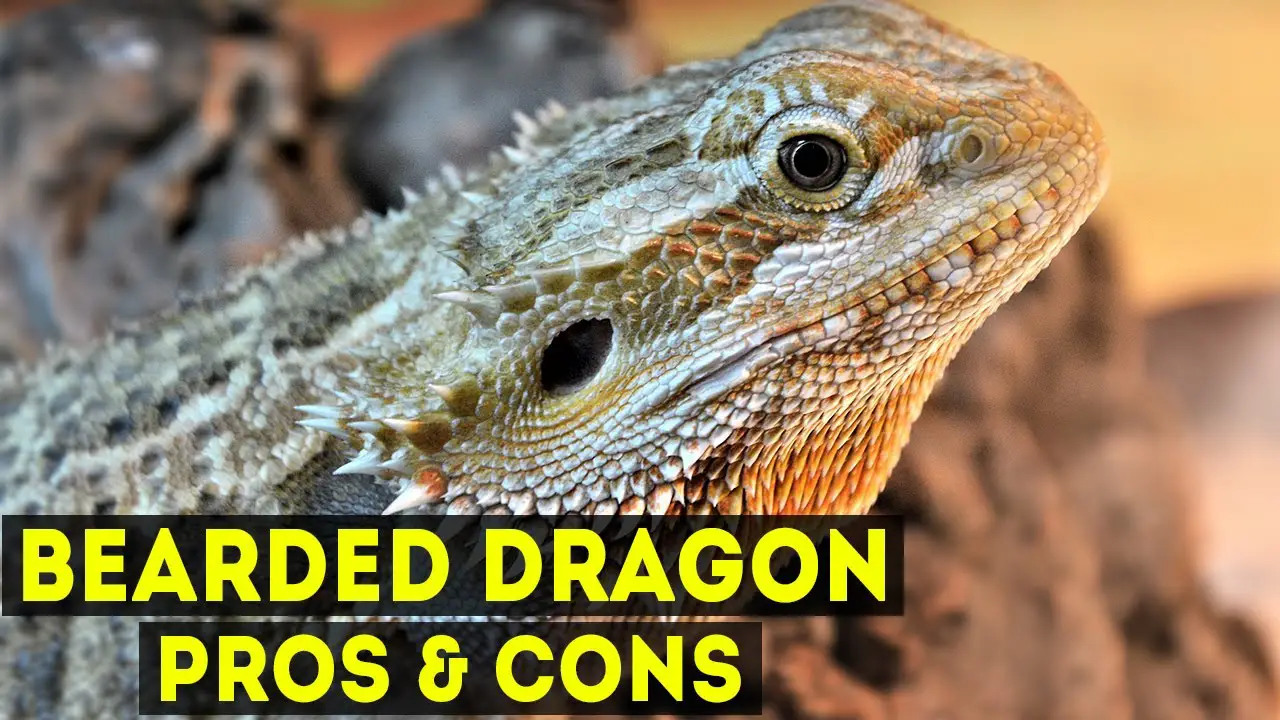

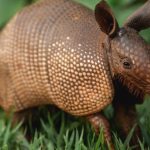
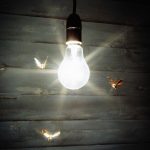
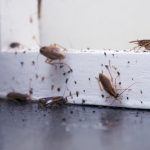
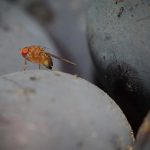

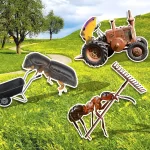

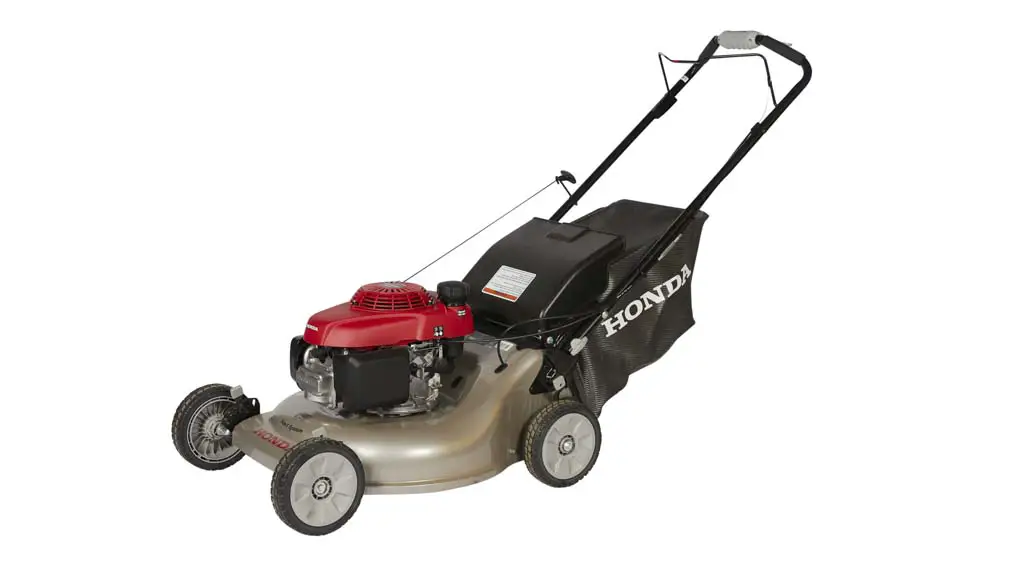
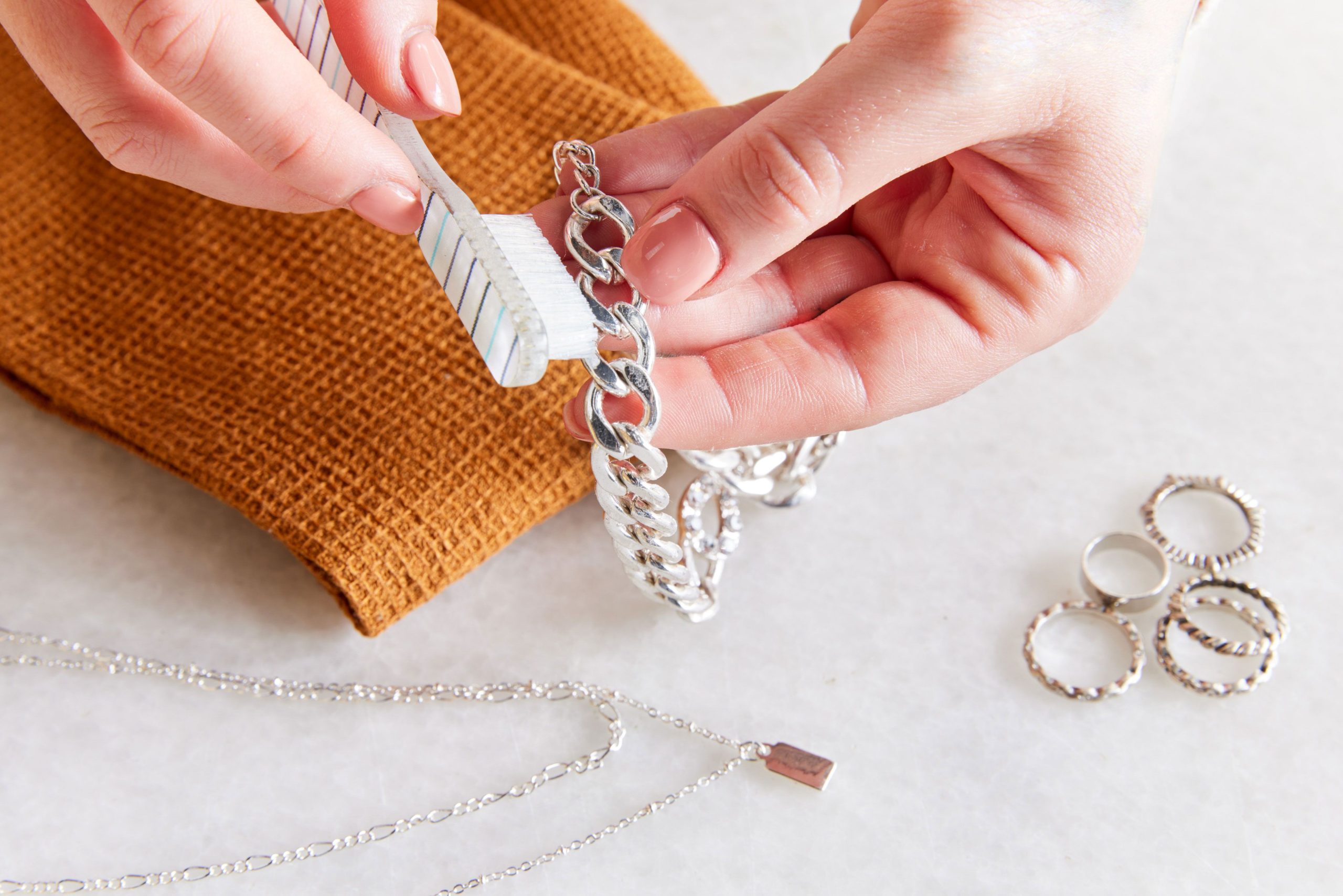

Leave a Reply